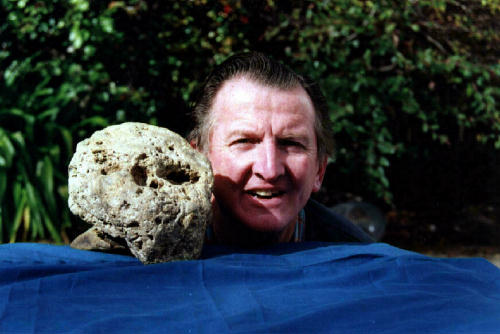
Late Homo erectus - Fish River, NSW Endocast skull No 2
Current Assessment of the Rex Gilroy Hominid Skull Collection
The findings presented here are subject to gradual change through new discoveries and reinterpretation of the evidence. As the skull-types demonstrate, the Australian Homo erectus specimens are of both the earlier flat-cranium ‘archaic’ and receding forehead ‘late’ forms, followed by both ‘archaic’ and ‘modern’ Homo sapiens.
Three small skull-types may represent a pygmy-size race of Homo with ‘modern’ features of considerable antiquity. One skull-type suggests a primate presence in Pleistocene Australia at a remote period. From New Zealand evidence of penetration there by Homo erectus is presented by two skull-types; an endocast of the ‘archaic’, and mineralised skull of the ‘late’forms.
A word about the skull-types: These are either of limestone, mudstone or ironstone mineralisation, and are either endocasts [ie internal casts formed by sediments filling the skull interior which solidified prior to the loss of the bone covering] or completely mineralised skulls. As these skulls have all suffered various degrees of geological distortion in the early stages of burial beneath varying depths of sediments, their identification has been arrived at through reconstruction.
In the dating of these skulls these and other factors, such as the approximate ages of overlying geological deposits have also been taken into account in arriving at their various [approximate] ages. We shall now proceed to study each skull-type in detail….